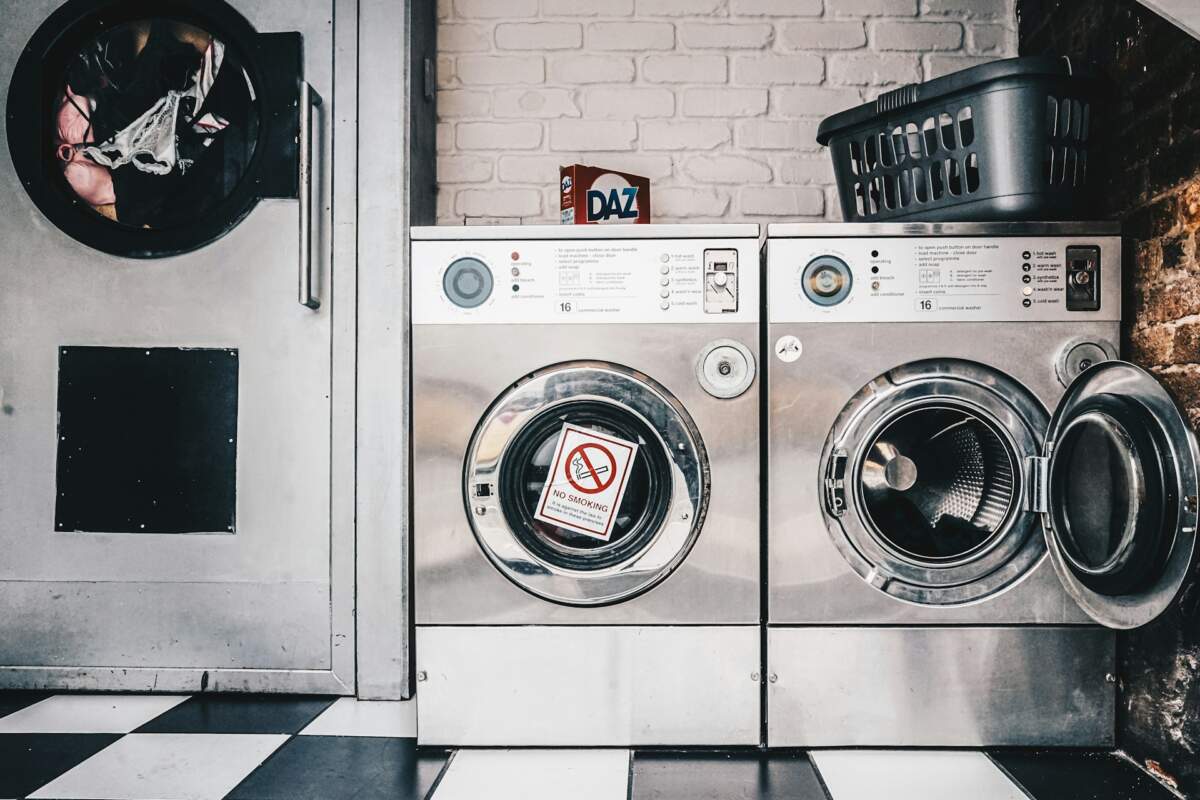Your washing machine works tirelessly through countless loads of laundry until one day it doesn’t. Before you panic and call for professional washing machine repair services, many common laundry issues have simple solutions you can try at home.
Understanding basic appliance troubleshooting can save you time, money, and the frustration of waiting for a technician.
Most washing machine problems stem from user error, minor maintenance oversights, or easily replaceable parts. With the right knowledge and a few basic tools, you can often restore your machine to working order in minutes rather than hours or days.
This comprehensive guide covers the most frequent washing machine malfunctions and provides step-by-step solutions. We’ll help you determine when a DIY fix is appropriate and when it’s time to contact professional appliance repair specialists.
Machine Won’t Start or Turn On
Check Power and Electrical Connections
The most basic appliance troubleshooting step involves verifying that your washing machine receives adequate power. Start by checking these essential components:
- Power cord connection: Ensure the cord is firmly plugged into both the machine and the wall outlet
- Circuit breaker: Reset any tripped breakers in your electrical panel
- GFCI outlet: Press the reset button on the ground fault circuit interrupters
- Power button: Hold the power button for 3-5 seconds rather than a quick press
Examine the Door Latch and Lock
Modern washing machines include safety mechanisms that prevent operation when the door isn’t properly secured. Inspect the door latch for:
- Lint or debris: Clean around the latch mechanism with a damp cloth
- Alignment issues: Ensure the door closes completely and the latch engages
- Damaged components: Look for cracked or broken latch parts that may need replacement
Verify Load Balance and Size
Overloading your machine or creating an unbalanced load can trigger safety shutoffs. Remove some items if the drum appears overpacked, and redistribute clothes evenly around the agitator or drum walls.
Water Not Filling the Tub
Inspect Water Supply Valves
Water supply problems often result from closed valves or kinked hoses. Follow these steps to restore proper water flow:
- Check shutoff valves: Locate the hot and cold water valves behind your machine and turn them fully counterclockwise
- Examine supply hoses: Look for kinks, crimps, or damage that could restrict flow
- Clean inlet screens: Remove hoses and rinse the small mesh screens that filter incoming water
Test Water Pressure
Low water pressure throughout your home can affect washing machine performance. Run faucets in nearby sinks to determine if the issue affects multiple fixtures. Contact your water utility company if pressure problems persist.
Assess Temperature Settings
Some machines won’t fill if the water temperature requirements aren’t met. Verify your hot water heater is functioning and set to an appropriate temperature (typically 120°F). Switch to cold water temporarily to determine if the hot water supply is the issue.
Excessive Vibration and Noise
Level the Machine Properly
An unlevel washing machine creates excessive vibration that can damage both the appliance and surrounding surfaces. Use these techniques to achieve proper balance:
- Check all four feet: Adjust leveling legs until the machine sits firmly without rocking
- Use a bubble level: Place it on top of the machine to verify horizontal alignment
- Tighten lock nuts: Secure the adjustable feet once the proper level is achieved
Examine the Load Distribution
Uneven loads cause the drum to become unbalanced during the spin cycle. Stop the machine and redistribute clothes evenly, separating heavy items like towels from lightweight fabrics.
Inspect Internal Components
Persistent noise may indicate worn or damaged parts:
- Drive belt: Look for fraying, stretching, or misalignment
- Drum bearings: Listen for grinding sounds that suggest bearing wear
- Shock absorbers: Check for fluid leaks or physical damage to vibration dampeners
Machine Won’t Drain or Spin
Clear Drain Hose Blockages
Drainage problems often result from obstructed hoses or filters. Address these common culprits:
- Lint trap: Remove and clean the drain filter according to the manufacturer’s instructions
- Drain hose: Disconnect and flush with hot water to remove soap buildup and debris
- Standpipe: Ensure the drainage pipe isn’t clogged or backing up
Check the Lid Switch
Top-loading machines use lid switches to prevent operation when open. Test the switch by pressing it manually while the lid is closed. If the machine doesn’t respond, the switch may need replacement.
Examine the Drive Belt
A loose or broken drive belt prevents the drum from spinning properly. Unplug the machine and remove the back panel to inspect the belt. Replace if you notice:
- Cracks or fraying
- Excessive stretching
- Complete breakage
Water Temperature Issues
Verify Water Heater Operation
Inadequate hot water affects cleaning performance and may prevent some cycles from starting. Check your water heater settings and ensure it’s producing water at the correct temperature.
Inspect Hose Connections
Reversed hot and cold connections create temperature problems. Verify that hot water hoses connect to hot water valves (typically marked with red) and cold to cold (typically marked with blue).
Clean Temperature Mixing Valve
Some machines include internal mixing valves that blend hot and cold water. These components can become clogged with mineral deposits over time, affecting temperature control. Consult your owner’s manual for cleaning procedures specific to your model.
Clothes Coming Out Dirty or Stained
Evaluate Detergent Usage
Proper detergent selection and measurement significantly impact cleaning results. Consider these factors:
- Detergent type: Use high-efficiency (HE) detergent in HE machines
- Measurement: Follow package directions and adjust for load size and soil level
- Water hardness: Increase the detergent amount in hard water areas
Clean the Machine Interior
Residue buildup inside your washing machine can transfer to clothes during future loads. Perform monthly cleaning cycles using:
- Hot water: Run the hottest available cycle
- White vinegar or commercial cleaner: Add 2 cups of white vinegar or use manufacturer-recommended cleaning products
- Wipe down surfaces: Clean the drum, door seal, and detergent dispenser with a damp cloth
Check Water Quality
Hard water or high mineral content can interfere with detergent effectiveness and leave residue on clothes. Consider installing a water softener if mineral deposits are visible on fixtures throughout your home.
Professional Repair Considerations
While many washing machine problems respond well to DIY solutions, certain issues require professional attention. Contact qualified appliance troubleshooting specialists when you encounter:
- Electrical problems: Sparking, burning smells, or repeated circuit breaker trips
- Major component failures: Motor, transmission, or control board malfunctions
- Water leaks: Significant pooling that suggests internal seal or hose failures
- Warranty concerns: Repairs that might void manufacturer coverage
Professional washing machine repair technicians have specialized tools, replacement parts, and expertise to diagnose complex problems safely.
They can also identify underlying issues that might not be apparent to homeowners, preventing future breakdowns.
Keep Your Laundry Running Smoothly
Regular maintenance and prompt attention to minor issues can extend your washing machine’s lifespan significantly.
Most common problems have straightforward solutions that don’t require professional intervention. However, knowing when to call experts prevents small issues from becoming major repairs.
Start with basic troubleshooting steps like checking power connections and cleaning filters. Progress to more involved solutions only when simple fixes don’t resolve the problem.
Remember that safety should always be your top priority—disconnect power before attempting any internal inspections or repairs.
When DIY solutions aren’t enough, don’t hesitate to visit https://mapleleafappliance.ca/ or contact professional appliance repair services.
Qualified technicians can quickly identify and resolve complex issues, getting your laundry routine back on track with minimal disruption.










